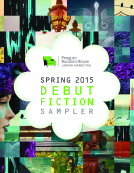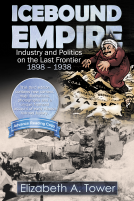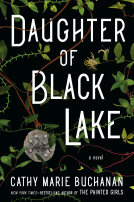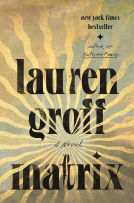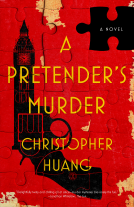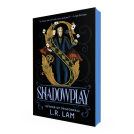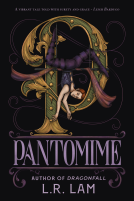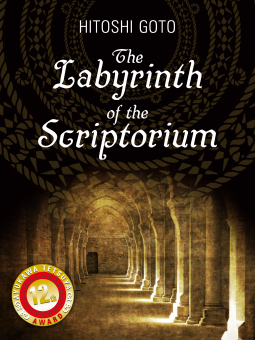
The Labyrinth of the Scriptorium
by Hitoshi Goto
This title was previously available on NetGalley and is now archived.
Send NetGalley books directly to your Kindle or Kindle app
1
To read on a Kindle or Kindle app, please add kindle@netgalley.com as an approved email address to receive files in your Amazon account. Click here for step-by-step instructions.
2
Also find your Kindle email address within your Amazon account, and enter it here.
Pub Date Mar 05 2015 | Archive Date Oct 19 2015
Description
The story follows the exploits of a Professor Tomii who stumbles upon a mysterious painting by a deceased Japanese artist in Switzerland. It depicts the siege of Montségur, the final stand of the Cathars, a Christian sect, in 13th century southern France. Professor Tomii is drawn deeper and deeper into the mysterious circumstances of the painting, the artist, and an unsolved murder that the artist witnessed.
In the classic styles of Umberto Eco, Agatha Christie and Ellery Queen, author Hitoshi Goto weaves a substantial and complex tale that keeps the reader stumbling through mazes of rationales and counter-rationales. The Labyrinth depicted by Goto is like a “miniature”, a medieval illuminated manuscript, small but highly precise, filled the sound of the Gregorian chant. The mysteries in the Labyrinth of the Scriptorium are finally totally unlocked in Goto’s subsequent novel Gutenberg-Dämmerung (Twilight of Gutenberg), published in Japan in 2005 (Japanese only). The Labyrinth of the Scriptorium was awarded the prestigious Ayukawa Tetsuya Award in 2002, Japan’s most renowned literary award for mystery novel
Available Editions
| EDITION | Ebook |
| ISBN | 9780991008360 |
| PRICE | $4.99 (USD) |
Average rating from 10 members
Featured Reviews
 Sarah-Hope P, Educator
Sarah-Hope P, Educator
Originally publish to acclaim in Japan in 2002, Hitoshi Goto’s The Labyrinth of the Scriptorium is a challenging read, simultaneously interesting and frustrating. The book has a mystery-within-a-mystery-within-a-mystery-within-a-mystery structure that requires readers willing to repeatedly leave one narrative for another.
What drew my attention to the book was both the title and the promise, in the write-up, of a mystery about the Cathars, the Christian sect annihilated as heretical in the 13th Century. Interestingly, this massacre has a parallel in feudal Japan—one of the book’s more interesting topics.
The Cathars appear early on in the novel, then are dropped for a series of nested mysteries set in Europe during and after World War II. The Cathars reappear at the book’s end as the central character, Professor Tomii puzzles his way through the more recent events. What this meant for me was that I read quickly at first, then more slowly when the strand I was most interested in was dropped, and finally sped up again when the novel returned to the theme that had drawn me to it.
The Cathar mystery is not resolved at the end of The Labyrinth of the Scriptorium. Instead, readers are promised a resolution in a sequel, Twilight of Gutenberg.
 Educator 211653
Educator 211653
Thank you Net Galley. I had not heard of Hitoshi Goto before I stumbled upon this book, on NetGalley. A fabulous read, that has a Russian, matroshka doll like structure. It is a book to read carefully so that you get all the narrative discontinuities. Some of the stories are about little known (to me) aspects of japan and this adds to the joy of reading the book.
 Sarah R, Educator
Sarah R, Educator
The labyrinthine plotting structure of "The Labyrinth of the Scriptorium" has many engaging elements, and there are intriguing puzzles to solve within the book. It is like an adult version of the Westing Game, mixed with Agatha Christie, mixed with Sherlock Holmes. Readers who enjoy the book will find themselves engaged for quite some time, but those who aren't interested may struggle to finish.
 Reviewer 112255
Reviewer 112255
Can I just take a moment to say--cool title!! I have spent many hours pondering why mystery/thriller genre titles do not amuse me (I know, I know, what sane person wastes hours pondering such things?--a bookworm). Modern mystery writers are too glitzy. That is what I came up with in the end. The stories now are so focused on some action or racy, edgy detail to set their mystery apart from every other best seller. The world is getting faster, and our attention spans are getting shorter. No one seems to care if you know who-dun'it by the third chapter as long as it was a fun ride.
Now there is every possibility that some of this novel got lost in the translation, but I have a gut feeling that it is all very accurate. From the style of writing, it just seems to a have an easy ability to cross the language barrier. Goto is taking his narrative point from the great Sherlock Holmes detective writing. A mystery of layers and complexity. Open clues and hints amidst such detailed scene building. I got to the end of the story so perplexed I wasn't even sure which mystery I was trying to solve.
The whole story is a Russian nesting doll of mysteries. I have to admit I completely lost track of the details in such a good way. Some readers may find this to be too much. This is not light, entertaining filler. This is an honest-to-goodness brain tickler. You really have to think about what you are reading. You can even tell when something being presented in the narrative is clearly an important detail, yet you have no one idea who the murderer is at the end.
Then he up and went with ending it solving a small fraction of one of the inner mysteries instead of the big reveal. That we will get in his second novel. Which frustratingly mixed news: it has been written but I have been unable to find any indication on a translation. Egad! It will be hard to recommend this to anyone like myself that gets hooked on having to know. If you can be satisfied with the resolution of a mini mystery and would enjoy a good stretch of the brain muscle, by all means, pick this up. It will be worth it.
